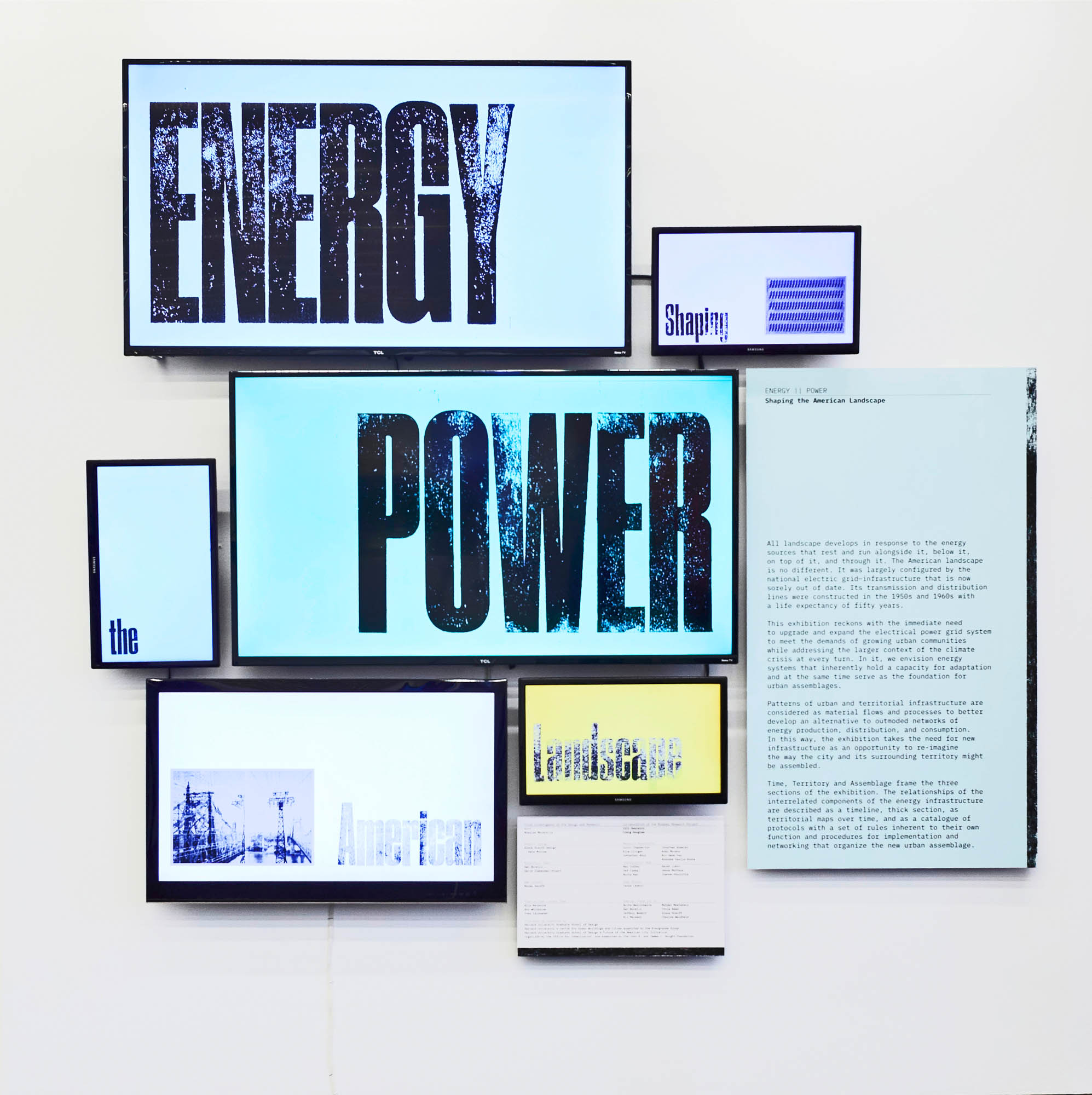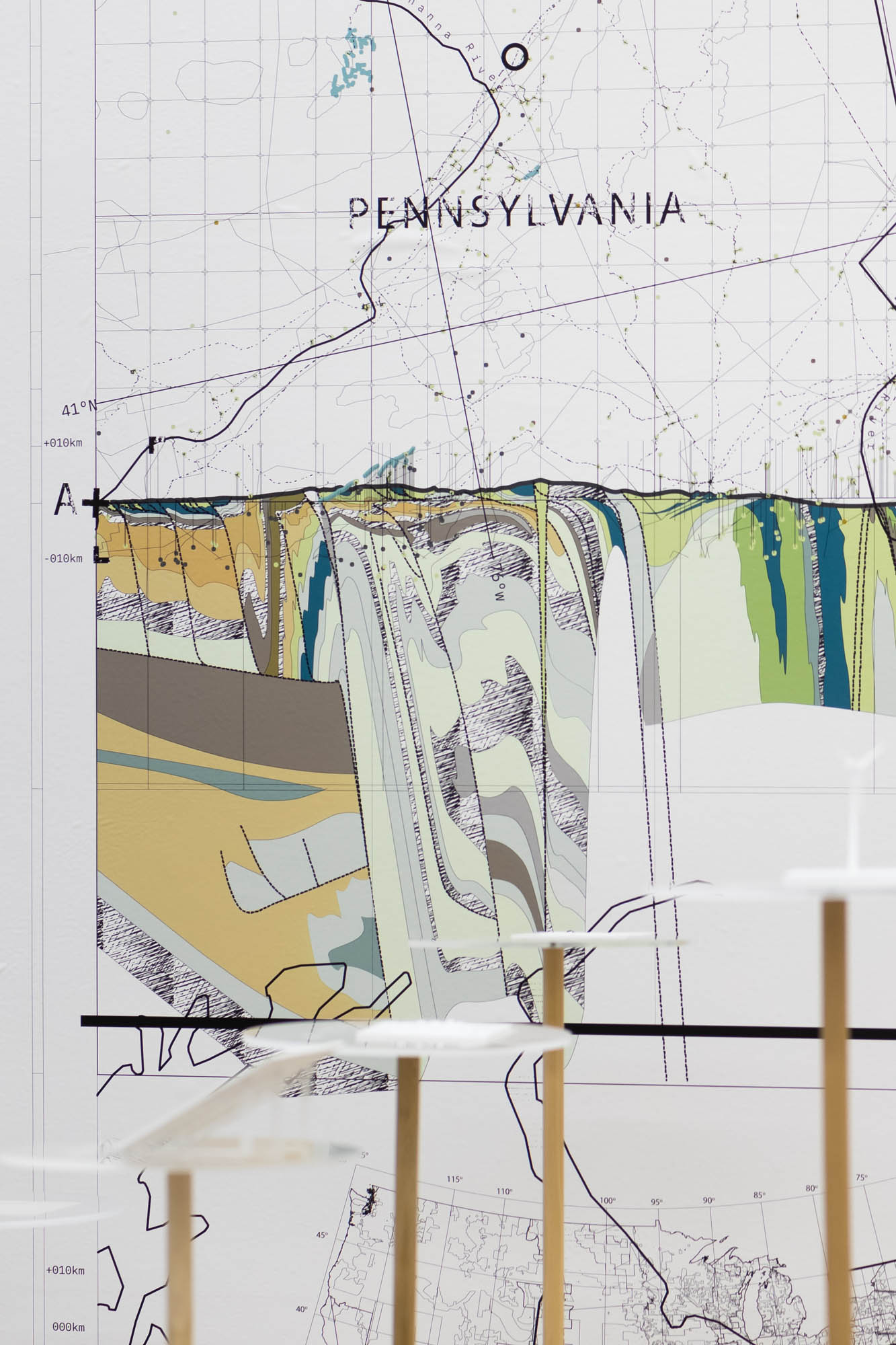Energy||Power
Shaping the American Landscape

All landscape develops in response to the energy sources that rest and run alongside it, below it, on top of it, and through it. The American landscape is no different. It was largely configured by the national electric grid—infrastructure that is now sorely out of date. Its transmission and distribution lines were constructed in the 1950s and 1960s with a life expectancy of fifty years.
This exhibition reckons with the immediate need to upgrade and expand the electrical power grid system to meet the demands of growing urban communities while addressing the larger context of the climate crisis at every turn. In it, we envision energy systems that inherently hold a capacity for adaptation and at the same time serve as the foundation for the urban assemblages.
Patterns of urban and territorial infrastructure are considered as material flows and processes to better develop an alternative to outmoded networks of energy production, distribution, and consumption. In this way, the exhibition takes the need for new infrastructure as an opportunity to re-imagine the way the city and its surrounding territory might be assembled.
Time, Territory and Assemblage frame the three sections of the exhibition. The relationships of the interrelated components of the energy infrastructure are described as a timeline, thick section, as territorial maps over time, and as a catalogue of protocols with a set of rules inherent to their own function and procedures for implementation and networking that organize the new urban assemblage.
This exhibition is supported by the Harvard Center for Green Buildings and Cities and the Office for Urbanization





